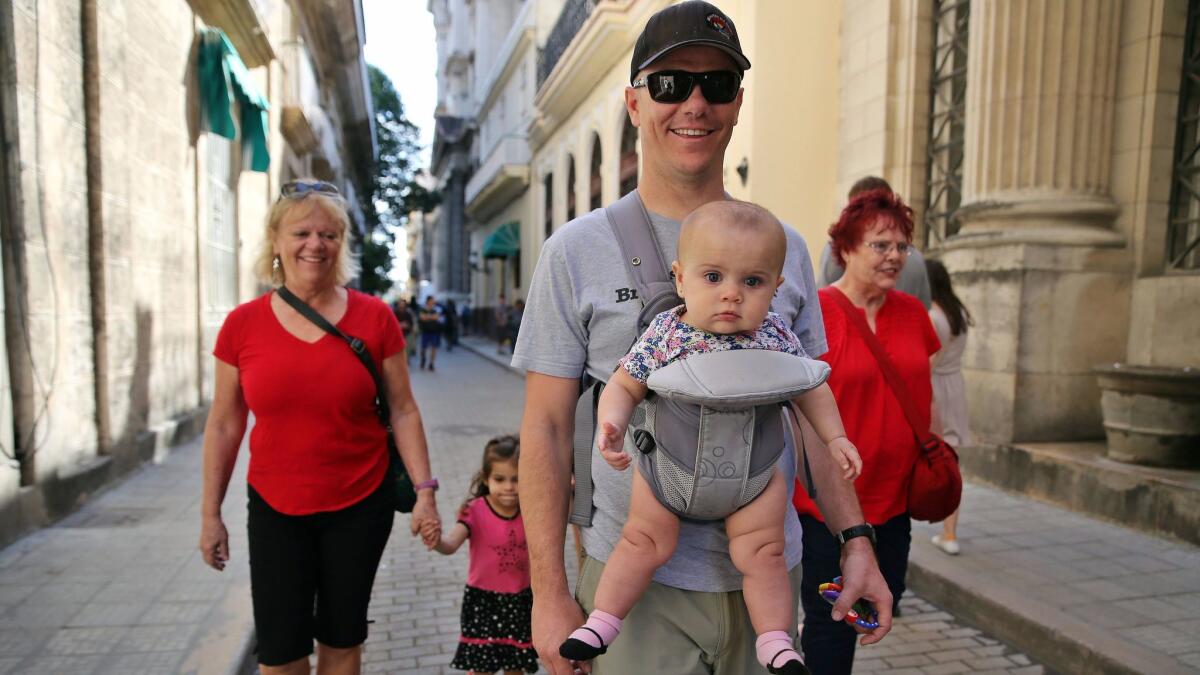How to save money on your trip to Cuba

I’ve always been one to abide by important rules. I carry car insurance. I don’t cheat on my taxes, and when my family decided to visit Cuba, I wanted to comply with the U.S. government regulations for travel to the Communist-run island.
That would have been easy had we taken an organized tour, but at $5,000 to $10,000 a week each, it was costly. Instead, I saved about $2,500 a person by planning the trip myself.
It took some patience and ingenuity, but it was worth the effort. We got to experience the Cuban culture and people, and we have stayed in touch with some of our new friends.
If that sounds like your type of vacation, here are some tips:
Know the law
President Trump has continued the looser Cuba travel regulations implemented in 2015. Tourism remains banned, but visits that fall under 12 categories don’t require a license from the Treasury Department.
Check out the State Department’s FAQs for more information.
We traveled under the educational/people-to-people option, which required that we “maintain a full-time schedule of educational exchange activities” and “meaningful interaction” that would “enhance” contact with Cubans, promote their independence, or support “civil society,” according to the Treasury Department’s FAQs.
The wording was vague, so I looked for clarification. I reviewed itineraries from tours that cater to Americans, and I found some specifics on a Cornell University Law School website
A bike trip exploring Havana, with casual conversations with shopkeepers, waiters and hotel staff, wouldn’t meet the government’s standards, the Cornell site said.
The visa required by the Cuban government was simple to obtain through my American Airlines reservation. Upon booking our flights, its partner, CubaTravelServices.com, sent me the forms. It cost $85 each for the visa and processing.
Have a plan
We traveled during New Year’s week and found that many of the bed and breakfasts, known as casas particulares, were booked by early December.
That, combined with the limited Internet service in Cuba that slows down email exchanges, had me in a near panic.
But we eventually found comfortable Airbnb rooms for $25 a night. Because the service is relatively new in Cuba, there were few reviews, but we took a chance and were pleased overall.
I wanted to set up activities in advance to ensure we met the people-to-people requirements. I started with the tours and guides rated on TripAdvisor, but again, most were booked.
By working down the list, I was finally able to set up three half-day tours in Havana to look at Art Deco architecture, the history of the mob and a rundown on the religions and culture. These cost $35 per person.
We also decided to take some lessons at Havana Music). My daughter, who plays trombone, studied Cuban jazz, and my husband and I learned some percussion rhythms by clacking wood sticks, called claves, and by playing the washboard-like güiro, a hollowed gourd. Others we met were studying piano and voice.
The staff also helped me set up a tour of Old Havana, which cost half the price of the other excursions. This outing relied on public transportation rather than a vintage car (although there were lots of other opportunities to ride in the 1950s-era autos).
Ask many questions and then ask some more
Before the trip, I asked everyone I knew whether they had contacts in Cuba. That led a friend of a friend to put us in touch with some people who run a music cooperative in the city of Matanzas, about 55 miles east of Havana and best known as the birthplace of danzón and rumba.
Our new Cuban friends were generous with their time and knowledge, inviting us to their home, sharing their stories and taking us on a tour of the city and its art galleries. They spoke English, but that’s not always the case in Cuba.
It wasn’t until we arrived in Cienfuegos, a city listed as a UNESCO World Heritage site, that we encountered tour buses. As I watched the groups dutifully following their guides, I wondered how that many people could have had the intimate discussions about life and politics we had enjoyed.
To me, those made my trip a true “people-to-people” experience.
@latimestravel
Sign up for The Wild
We’ll help you find the best places to hike, bike and run, as well as the perfect silent spots for meditation and yoga.
You may occasionally receive promotional content from the Los Angeles Times.



